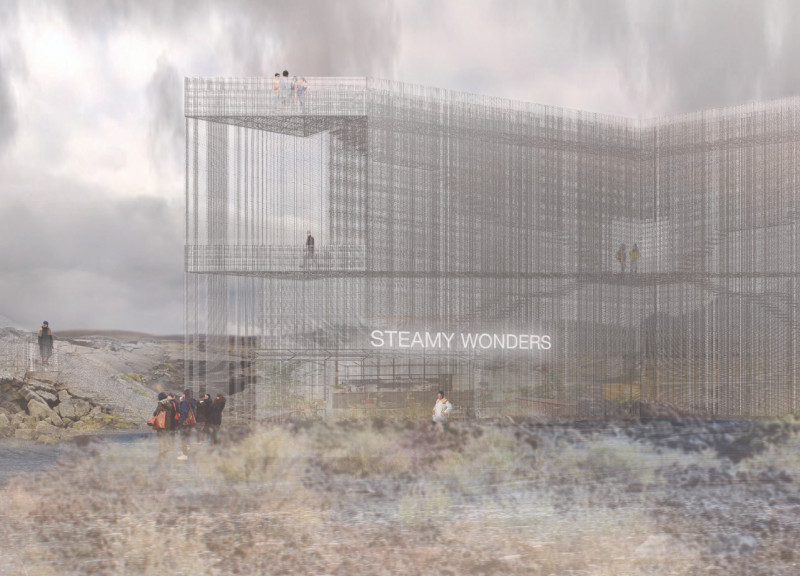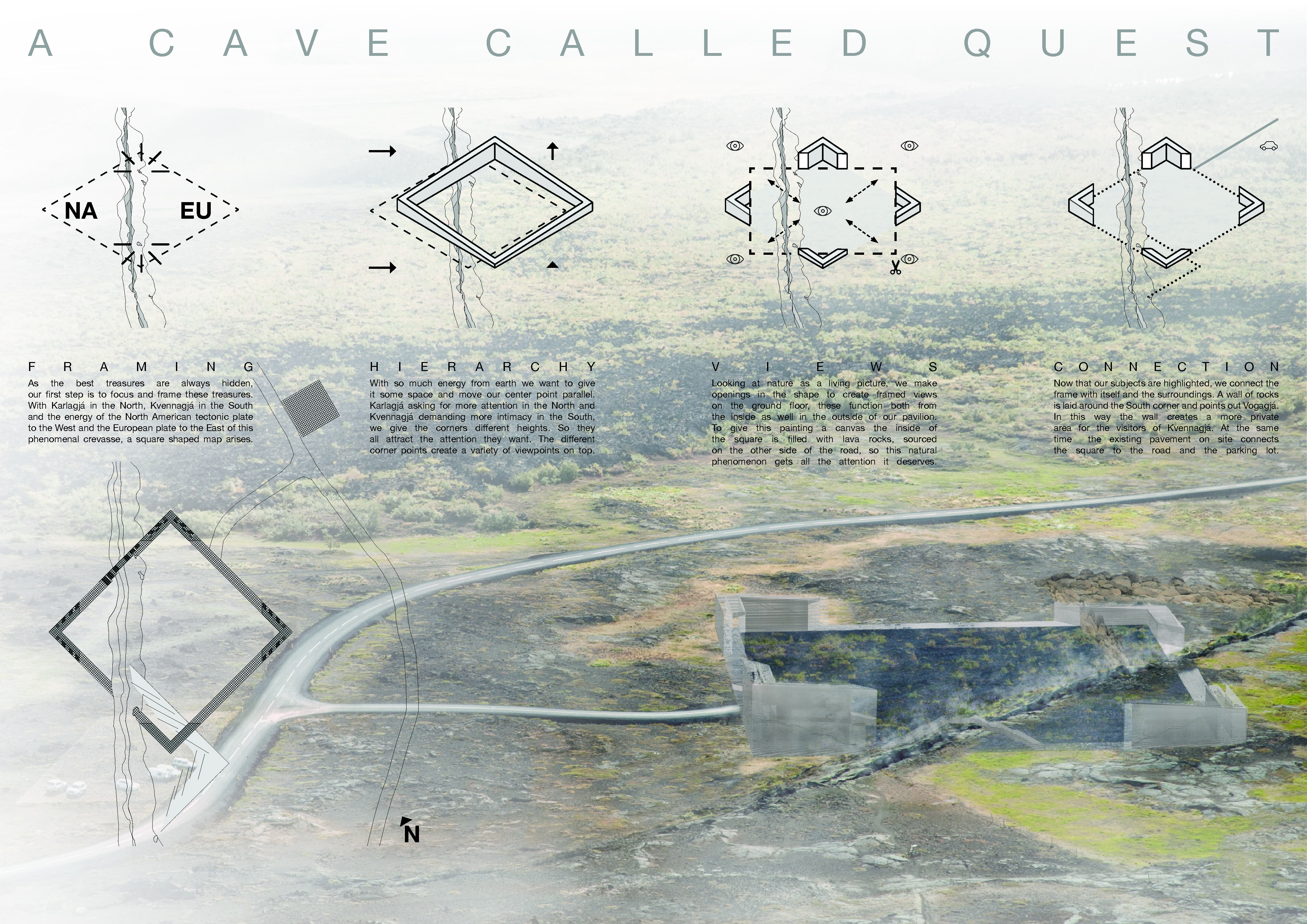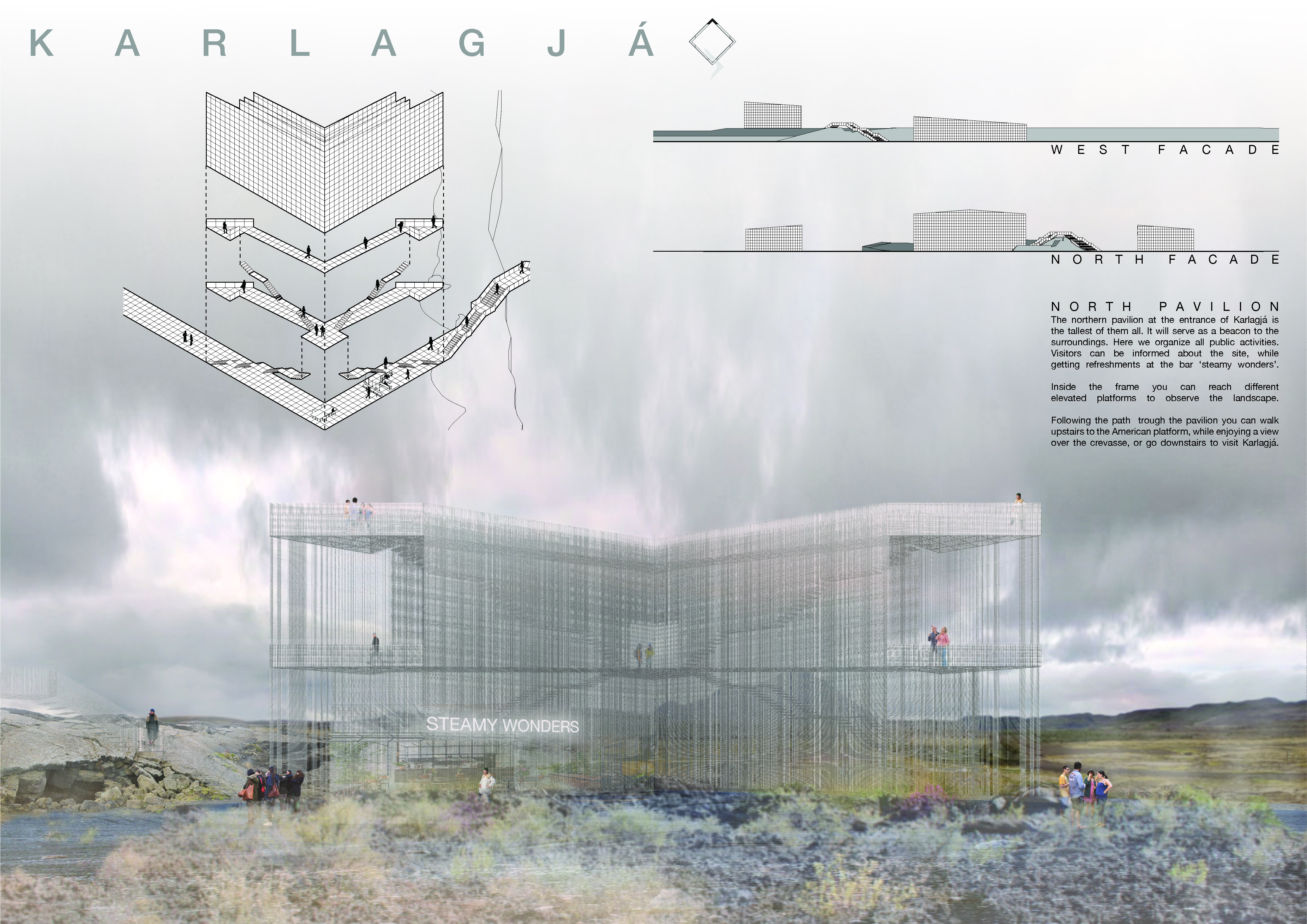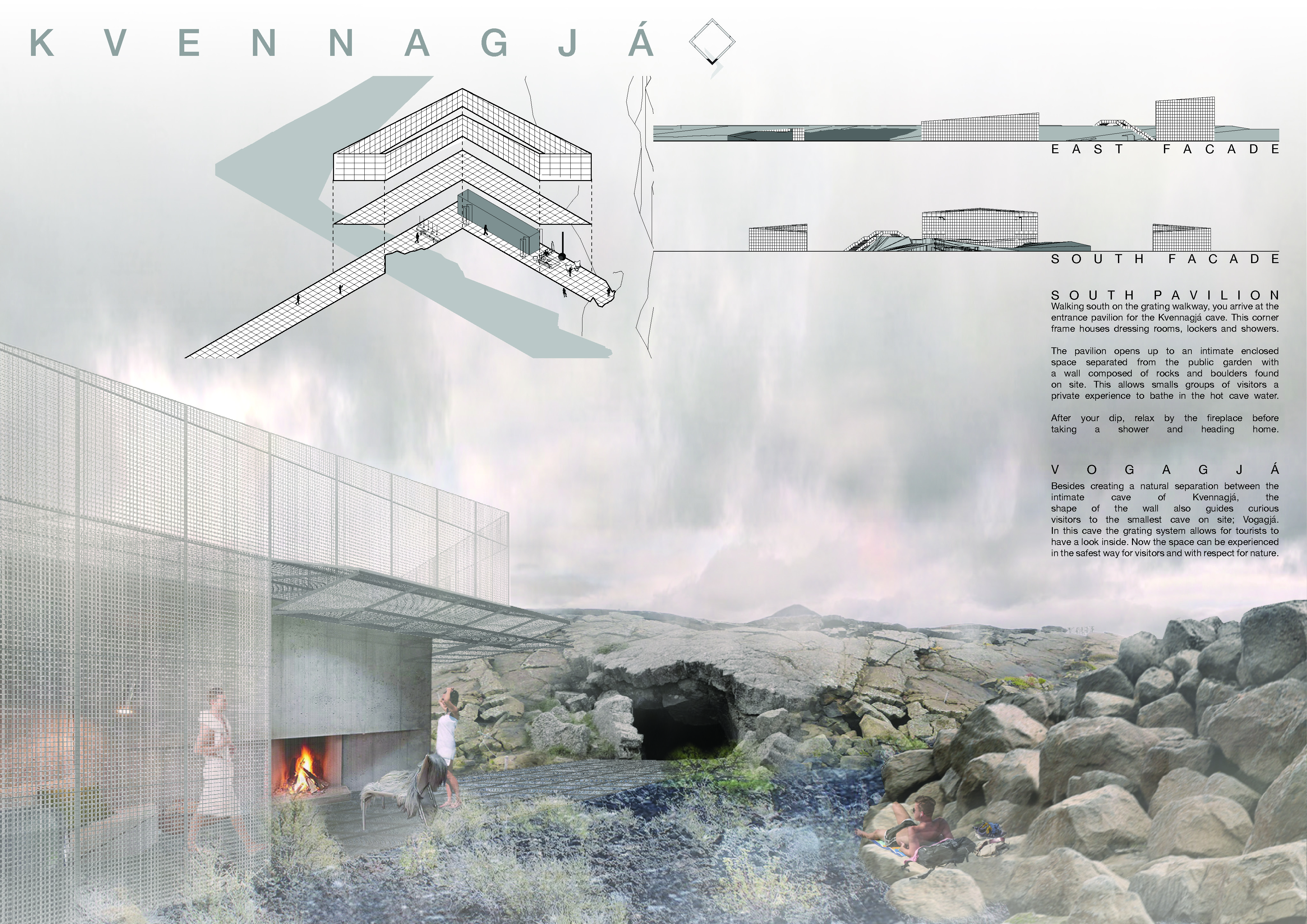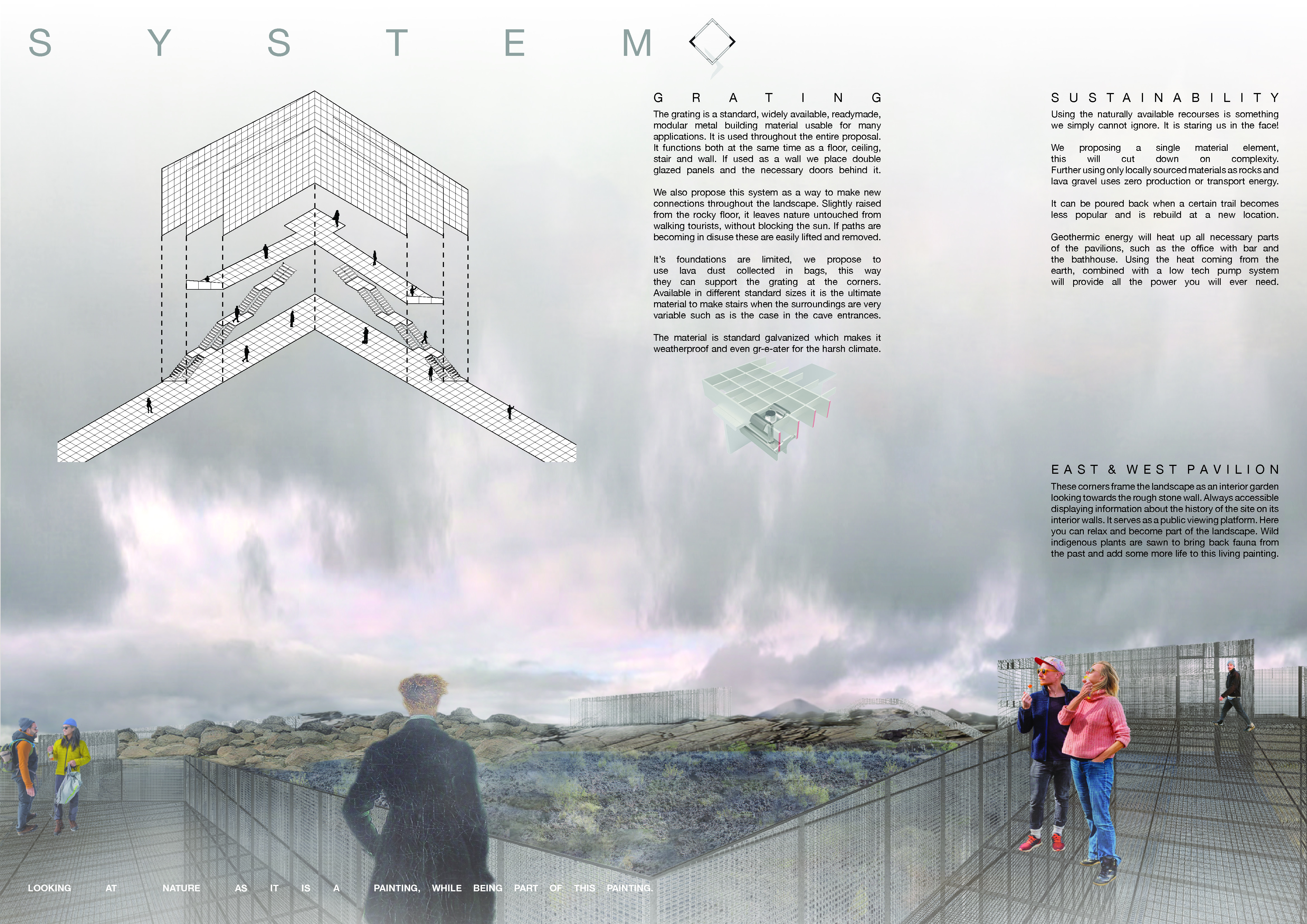5 key facts about this project
Unique Interaction with Landscape
The project consists of four main pavilions—North, South, East, and West—each serving distinct yet interconnected functions. The North Pavilion acts as the central entry point, offering informational resources and a communal space for visitors. Its elevated design provides panoramic views of the surrounding area, enhancing the experience of arriving at the site. The South Pavilion focuses on privacy, featuring dressing rooms and showers for visitors engaged in outdoor activities. The East and West Pavilions serve as gateways that connect visitors to the landscape, with pathways integrated into their structures to facilitate exploration.
Materiality and Sustainability
The architectural design employs a diverse range of materials, with galvanized steel grating forming the core of the pavilion structures. This material provides durability against Iceland's harsh climate while allowing for visual transparency that connects indoor spaces to the outdoors. Concrete is used for structural support, offering stability to the pavilions. Double-glazed panels further enhance the connection to the environment, providing thermal insulation and unobstructed views of the dramatic landscape. Local stone integrates the pavilions into the surrounding geology, reinforcing the project's contextual relationship with the site.
Sustainability is a key consideration within the design. The use of locally sourced materials minimizes transportation impacts, while the incorporation of geothermal and solar resources achieves energy efficiency. This thoughtful approach to sustainability ensures that the project remains sensitive to its ecological surroundings.
Explore Further
For those interested in gaining deeper insights into this project, exploring the architectural plans, architectural sections, and detailed architectural designs will offer a comprehensive view of its unique elements and innovative approaches. The architectural ideas behind "A Cave Called Quest" showcase how thoughtful design can enhance the human experience while respecting the natural environment.


